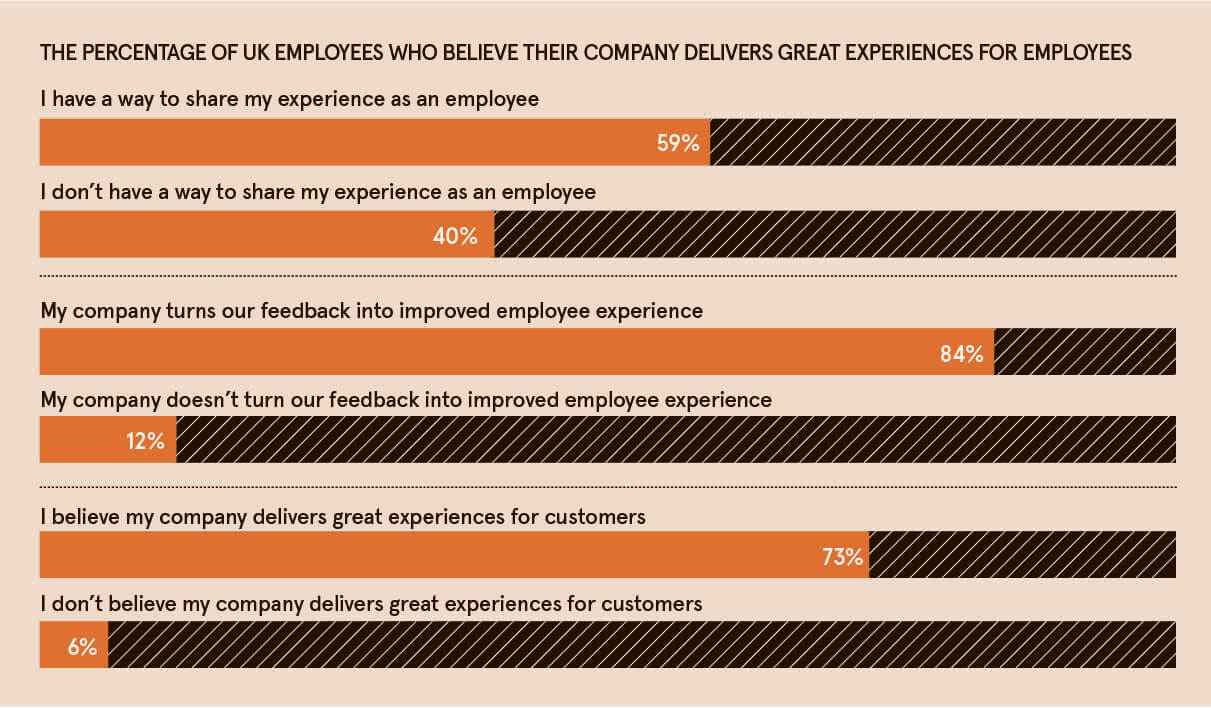The role of human resources departments is evolving as they are being increasingly asked to be more strategic in their approach and able to act as advisers within their organisation.
This requires HR leaders to have much better data upon which they can drive decision-making and provide the strategic lens businesses are striving for. If they’re unable to understand how employees feel at every stage of their experience at the company, and tie this to operational outcomes, they are left with large gaps in the knowledge and insights needed to inform decisions.
Meanwhile, employees themselves are changing as new generations are ushered into workplaces and the nature of what work means to individuals shifts. Millennials already form a substantial portion of the UK workforce and introduction of Generation Z is adding to the new set of expectations employers are racing to adjust to.
Add to this the burgeoning war for talent and employees spending less time with companies, and it’s crucial organisations are designing experiences that not only attract the best people but also keep them for as long as possible. Inviting targeted and constant feedback is central to this process.
HR departments want to understand how people feel at every stage and make changes to improve attraction, retention and productivity
“Companies have moved away from talking about employee engagement to employee experience, but few are in a place where they are able to map out and understand exactly what their version of employee experience means,” says Sally Winston, head of employee experience solution strategy, Europe, Middle East and Africa, at Qualtrics. “As part of their more strategic outlook, HR departments want to understand how people feel at every stage and make changes to improve attraction, retention and productivity.”
While there is a clear desire to measure staff feedback better and technology has come to the fore to help HR leaders build employee listening programmes, companies are being held back by solutions that result in a cookie-cutter approach whereby every organisation is thinking about employee experience in exactly the same way.
The reality is employee experiences are different depending on the type of company, the strategic HR challenges and the type of people employed. By adopting only a generic programme that measures the obvious moments in the employee life cycle, such as joiner experience, leaver experience and some structured questions through the year, organisations are finding results are not creating the insights they need to affect real change in the business.

“To really understand the employee experience, you need to design a programme that fits with the issues and the needs your employees have,” says Winston. “You need to be able to adapt and evolve depending on what’s going on within your business. If you’re trying to hire lots of talent, then you need to be measuring the experience right from the candidate stage, all the way through the onboarding process, and designing it to align with whatever your key onboarding moments are.
“Many businesses are trying to become more customer centric, so knowing what customer-facing employees are feeling and seeing customer interactions as a key element of employee experience can drive much higher return on investment. You also need to give employees the chance to give feedback so you can make changes that will allow individuals to have a better experience at work.”
Qualtrics is an experience management platform that helps brands manage and improve the four core experiences of business: customer, employee, product and brand. The company offers several different tools for HR professionals to collect, analyse and act on employee feedback gathered across the life cycle.
“We’re going to move into a space where companies think about employee experience in the same way they do about customer experience, properly understanding and mapping the different journeys and personas that exist within their business, and creating transformational results,” says Winston. “Companies will use platforms such as Qualtrics to really comprehend the moments that actually matter for people and to create systems of action which combine transformational insights with strategic, tactical change on the frontline.”
For more information please visit qualtrics.com
HR departments want to understand how people feel at every stage and make changes to improve attraction, retention and productivity

